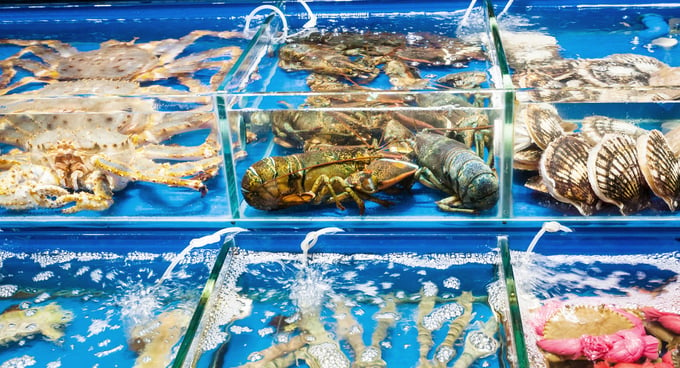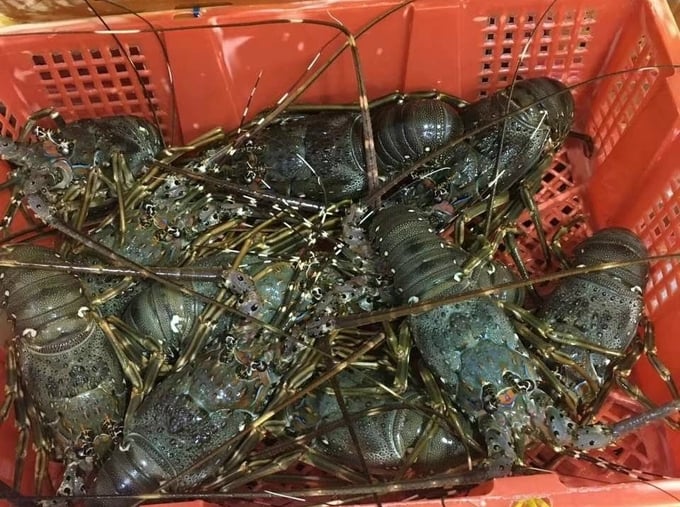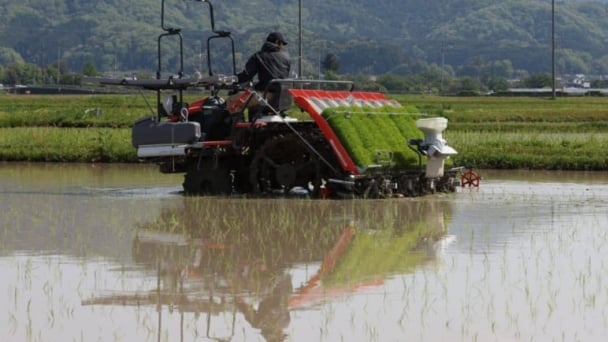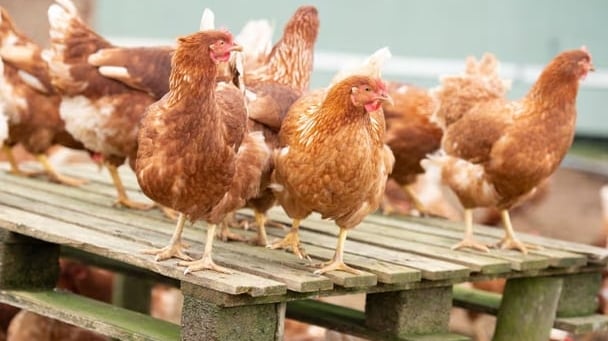May 18, 2025 | 02:37 GMT +7
May 18, 2025 | 02:37 GMT +7
Hotline: 0913.378.918
May 18, 2025 | 02:37 GMT +7
Hotline: 0913.378.918
According to the Foreign Agricultural Services Agency (US Department of Agriculture - USDA), in 2023, the United States achieved a significant milestone in exporting live Boston lobsters to China, surpassing USD 182 million in total value. This marked an impressive 86% year-over-year increase, setting a record in nearly five years. Live lobsters from the US hold about a quarter of the Chinese market share.
In contrast, China's imports of live lobsters from Canada in 2023 were valued at USD 604 million, indicating a 17% year-over-year increase.
As for live crabs, the United States export of live crabs to China in 2023 reached 73 million USD, returning to a level similar to that of 2021 after a decline in 2022.

The demand for live lobsters and live crabs in China is increasing rapidly. Photo: SS.
The United States is the fourth largest exporter of live crabs to China, accounting for 4.5% of the market, behind only Russia (60%), Canada (10.5%), and Myanmar (5%).
Russia is the leading exporter of live crabs to China due to its geographical proximity and stable economic relations with China. Russia's live crab exports to China surged by 138% between 2020 and 2023.
Live lobsters, crabs, mollusks, and crustaceans account for more than three-quarters of China's live seafood imports from other countries.
Myanmar's live crab exports to China surged by 104% between 2020 and 2023, thanks to the Comprehensive Economic Partnership Agreement and the removal of COVID-related limitations.
Chinese customers' strong interest in imported live fish creates potential for US seafood exporters, as Chinese seafood products lack diversity despite China being the world's largest seafood producer.
Chinese customers are increasingly looking for high-quality, globally renowned culinary goods.
China's average seafood consumption per capita in 2022 was 16.2 kg. However, some industry sources estimate that per capita seafood consumption in this market is 40.33 kg. In contrast, the average seafood consumption per person in the United States is approximately 9.5 kg. This graph illustrates a huge discrepancy in demand for easy comparison.
Lobsters, king crabs, and Dungeness crabs are in high demand, particularly for premium events like banquets and weddings.
The increased demand for live lobsters and crabs in China is attributed to customers' increasing understanding that seafood is a healthy source of protein for health, as well as the convenience of e-commerce platforms that allow for quick delivery.
According to a report from foreign agriculture services, US seafood exporters can profit on this trend by providing seafood goods that domestic Chinese providers cannot compete with in terms of quality and diversity.
Furthermore, big holidays such as the Lunar New Year and the Mid-Autumn Festival are ideal periods for boosting revenue from the selling of live seafood. US seafood exporters gain greatly from entering this market during certain holiday seasons.
According to the Vietnam Association of Seafood Exporters and Producers (VASEP), Vietnam's seafood export turnover would reach USD1.95 billion by the end of the first quarter of 2024, up 6.5% from the same time the previous year. The United States, Japan, China, and Hong Kong are the top four largest importers.
Notably, shipments to the US market have increased by 14.1% to over USD324 million.
Exports to Japan in the first quarter of this year were unchanged from the previous year.
Meanwhile, exports to the Chinese and Hong Kong markets climbed by 12.6% over the same time last year, totaling over USD314 million. The top five seafood species exported from Vietnam to China are catfish, whiteleg shrimp, lobster, tilapia, and crab.
Vietnam's lobster and crab exports to this market, in particular, had a significant increase in the first quarter of this year, with lobster jumping 11 times and crab expanding 7 times over the same period in 2023.
Many seafood specialists say that Chinese consumers, famed for their culinary skills, prefer raw ingredients, particularly live shellfish like crab and lobster. Labor income is now not too high, hence there is little demand for processed fish goods.
Mr. Truong Dinh Hoe, General Secretary of VASEP, remarked that while China typically likes live seafood goods, Vietnamese seafood exporters encounter restrictions when entering this market due to regulations governing exports via official channels for live seafood.
China currently requires traceability management from farming/catching, harvesting/collection, transportation, packing, and export consumption. Specifically, the General Administration of Customs of China (GACC) is seeking feedback on a draft order governing Vietnam's live seafood exports to this market. China demands that entities involved in this process have codes, farming areas, be monitored, and have traceability capabilities.
China additionally requires that packing facilities be registered and identified as approved for export to China before engaging in the live seafood export procedure to this market.

For live seafood, China is currently requiring management throughout the production chain, from farming/catching, harvesting/collecting, transportation, and packaging, to export consumption. Photo: Hong Tham.
Specific regulations for Vietnam's live seafood exports to China include the following: exported products must be on China's recognized list of 48 live aquatic animal species.
Local aquaculture/veterinary management agencies must inspect and certify farming facilities for food safety/veterinary hygiene conditions, issue codes, and monitor samples for disease during farming (for example, black tiger shrimp and live shrimp).
The National Agro-Forestry-Fisheries Quality Assurance Department evaluates the food safety conditions of packaging facilities exporting live seafood products and submits application documents and facility registration files to GACC's Plant Quarantine and Inspection Bureau.
The Plant Quarantine and Inspection Bureau updates the GACC website with a list of facilities that meet the requirements.
Exported batches receive certificates. The daily certificate list is forwarded to Chinese Customs (Nanning) for cross-referencing.
Since February 1, 2021, China has designated spiny lobsters as an endangered species group 2. China modified the Wildlife Protection Law in May 2023, making it illegal to catch animals listed as endangered in 2021. As a result, China outlaws the capture, use, trade, and sale of wild spiny lobsters. Farmed spiny lobsters are defined in China as those that have not been directly collected and must go through the farming procedure; if the seedlings are F2, they are also called naturally caught spiny lobsters.
Chinese importers who want to import spiny lobsters must get a permit from the Fisheries Bureau. GACC instructs the customs system at ports to regulate the import of naturally caught spiny lobsters strictly.
Vietnam's packaging facilities included in the registry for exporting live seafood to China will meet the requirements for assessing and certifying batches of live seafood exports to this market, as outlined in MARD's circulars.
Translated by Linh Linh

(VAN) In the face of counterfeit and imitation products, Khanh Hoa Salanganes Nest Company hopes for the prompt completion of the legal framework, strict enforcement against violations, and protection of the bird’s nest brand.

(VAN) Japan's efforts to lower the price of rice through the release of its stockpile may finally be making some progress, albeit at a snail's pace.

(VAN) U.S. tariffs are not only a 'shock', but also an opportunity for Vietnamese businesses to renew their mindset toward comprehensive development.

(VAN) As Bac Giang lychee enters the harvest season, Minister Do Duc Duy expects that the fruit will contribute greatly to agricultural exports due to standardized production and deep processing.

(VAN) Consumers have shown a preference for free-range eggs, but those farming systems are more vulnerable to biosecurity risks like bird flu.
/2025/05/09/5701-1-184335_301.jpg)
(VAN) Vietnam’s eel exports nearly doubled thanks to a mud-free farming model, opening up new prospects while still facing numerous barriers related to international standards.

(VAN) Minister Do Duc Duy warned that if production is not professionalized and supply chains are not transparent, the U.S. market could become a growth bottleneck.